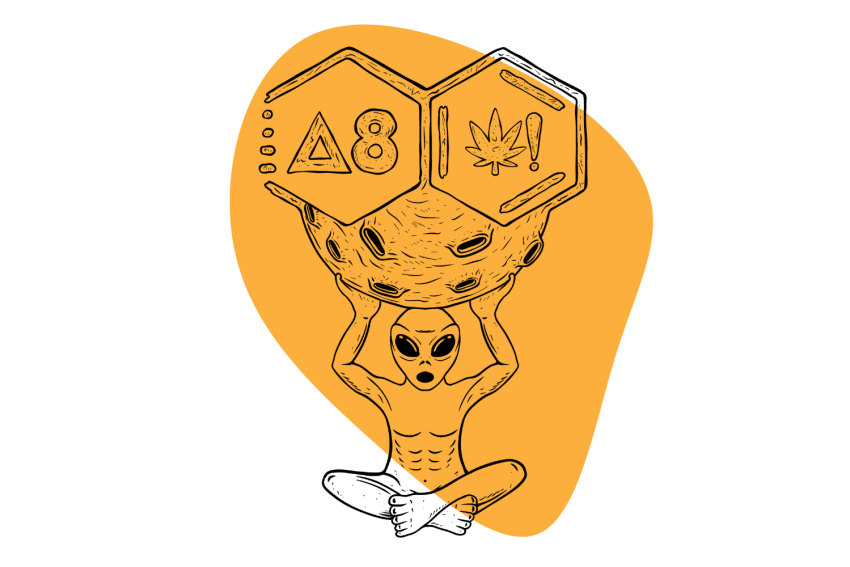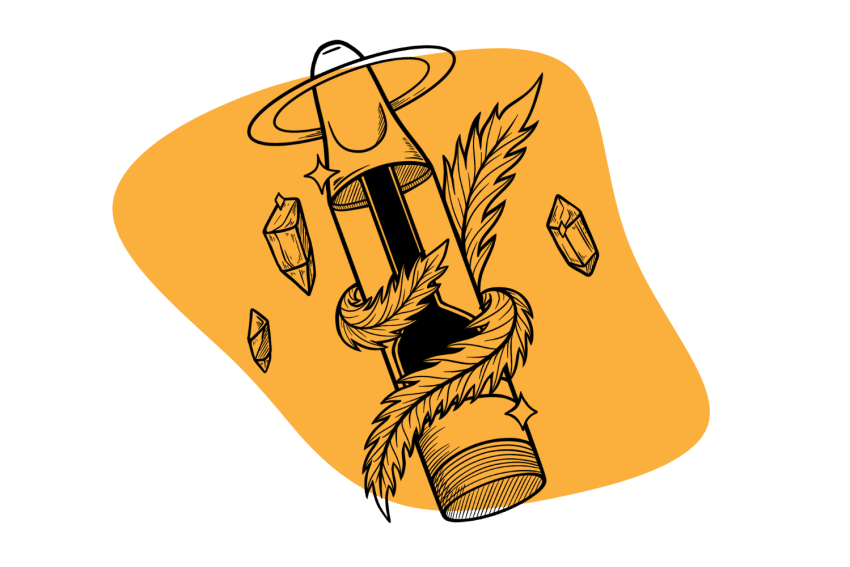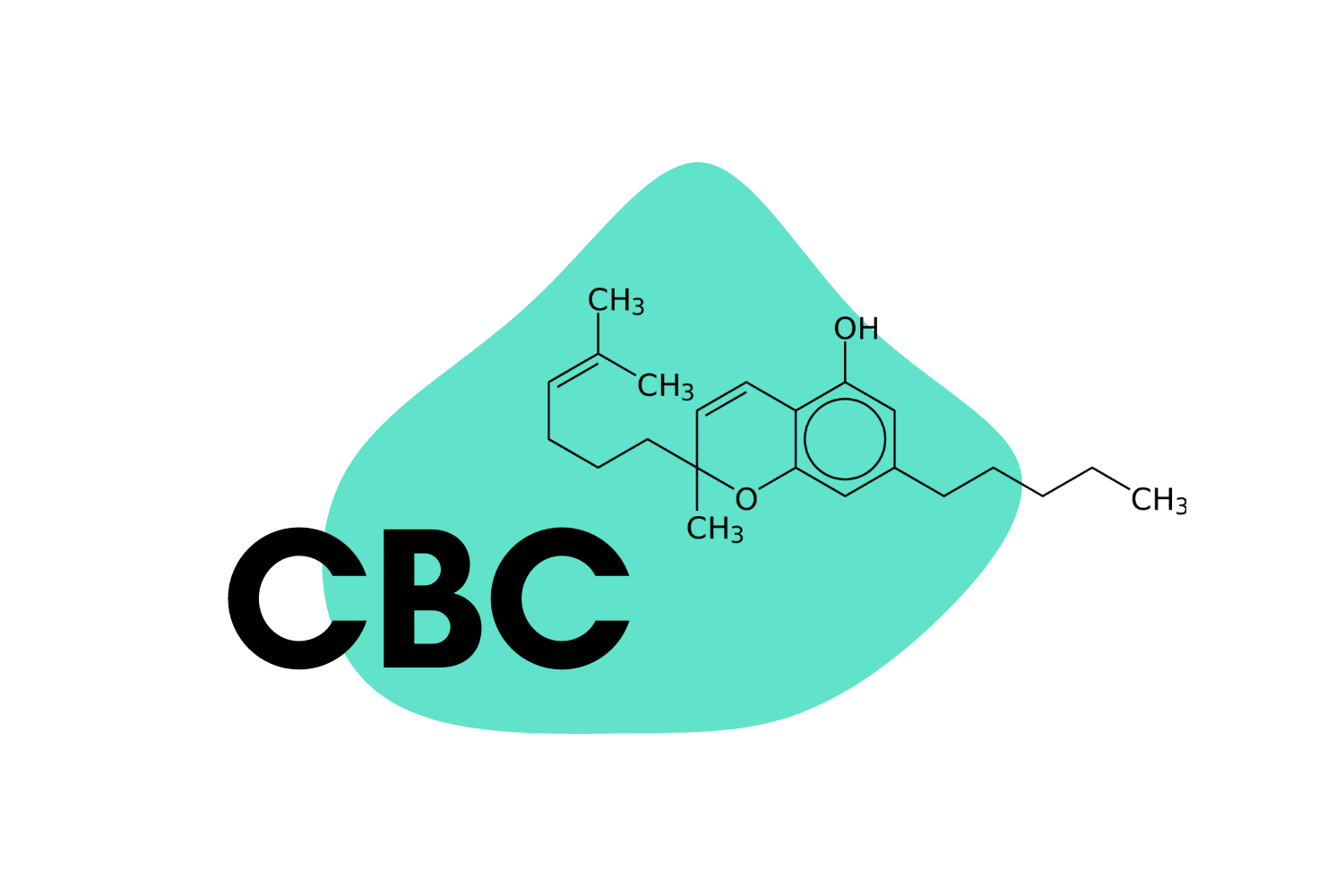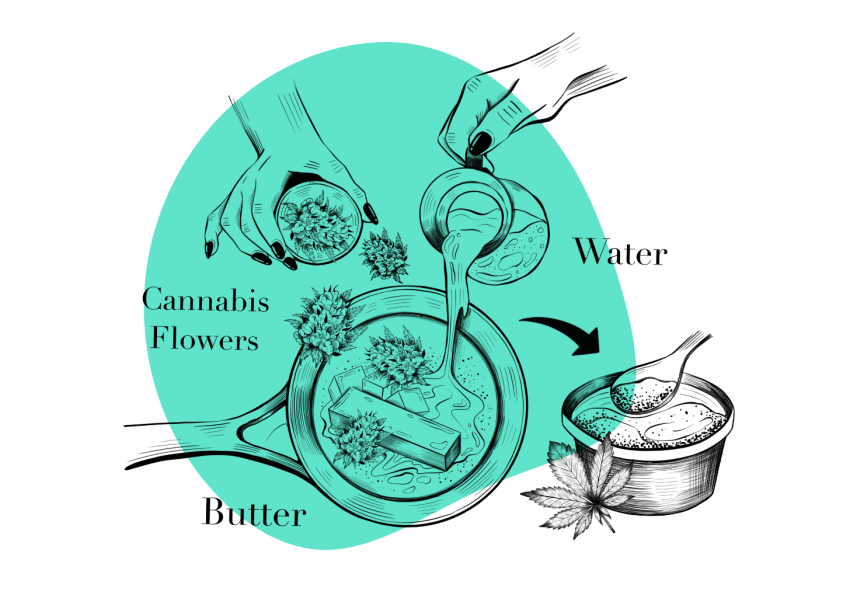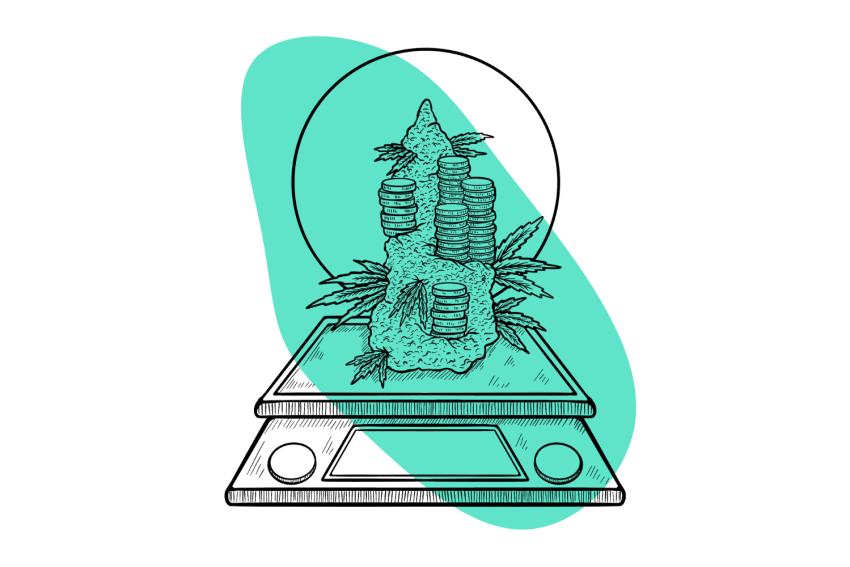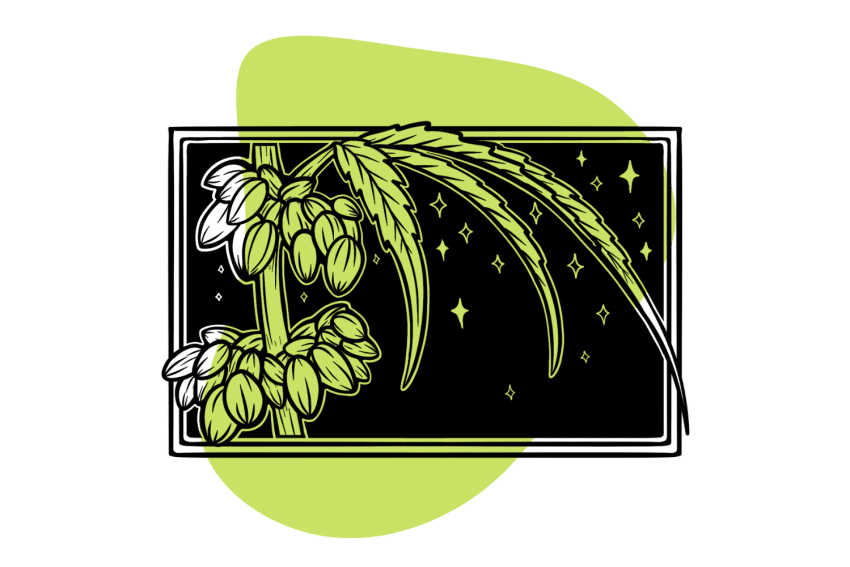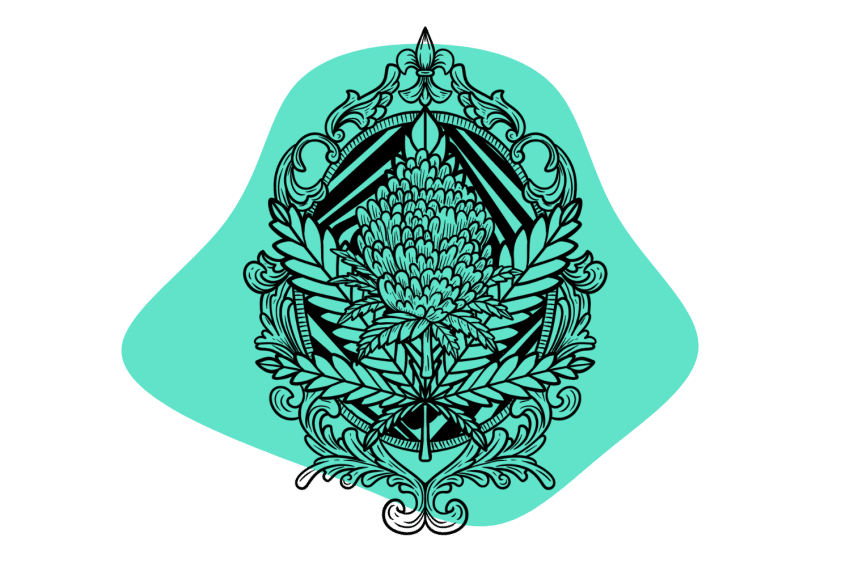Where Does Weed Grow Naturally?
Cannabis, a plant that has coexisted with human civilization for millennia, holds a complex history of domestication and adaptation. Here’s where it grows wild today and where researchers think it originated from.
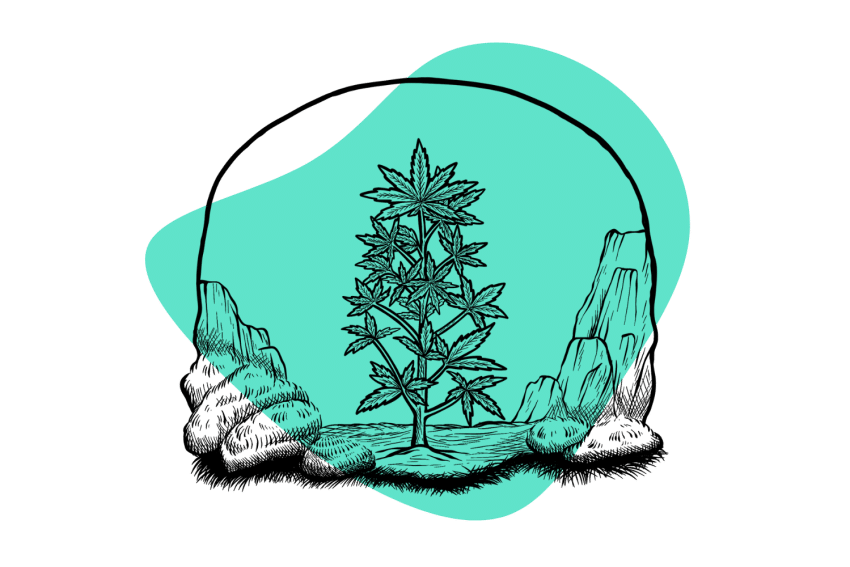
Wild weed has a vast habitat range. Its origins are believed to be in the regions encompassing present-day India, Pakistan, Afghanistan, Nepal, and Tibet. And indeed, you can find plenty of wild weed growing in these regions today.
Wild cannabis can be found pretty much all across Eurasia, from the more southern reaches of India to the colder Central Asia and even freezing northern Siberia. Even in the Swiss Alps and German forests, patches of wild weed grow among other local plants.
There’s even a parish in Estonia whose flag and coat of arms include a cannabis leaf front and center [3].
Related Guides: How to Grow Weed At Home 101 | Who Discovered Weed?
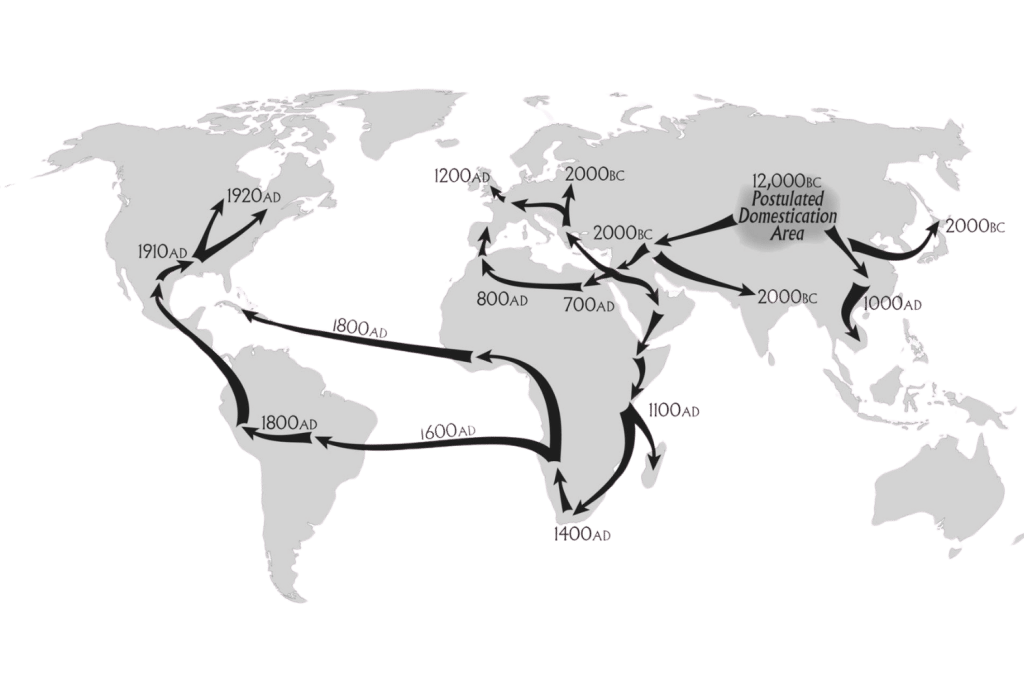
What’s the Perfect Climate for Wild Weed?
As you might’ve guessed, this wide habitat range means weed can grow just about anywhere.
From Amsterdam to Calcutta, cannabis is not a picky plant when it comes to climate. The different subspecies (indica, sativa, and ruderalis) have different preferences, but weed is a hardy plant.
Generally, weed will grow and flower at any temperature from 15 to 30 degrees Celsius. But to achieve maximum growth, the ideal temperatures should be between 25 and 30 degrees Celsius.
Any climate hotter than 30 degrees may hinder plant growth, and colder than 15 degrees might prove fatal.
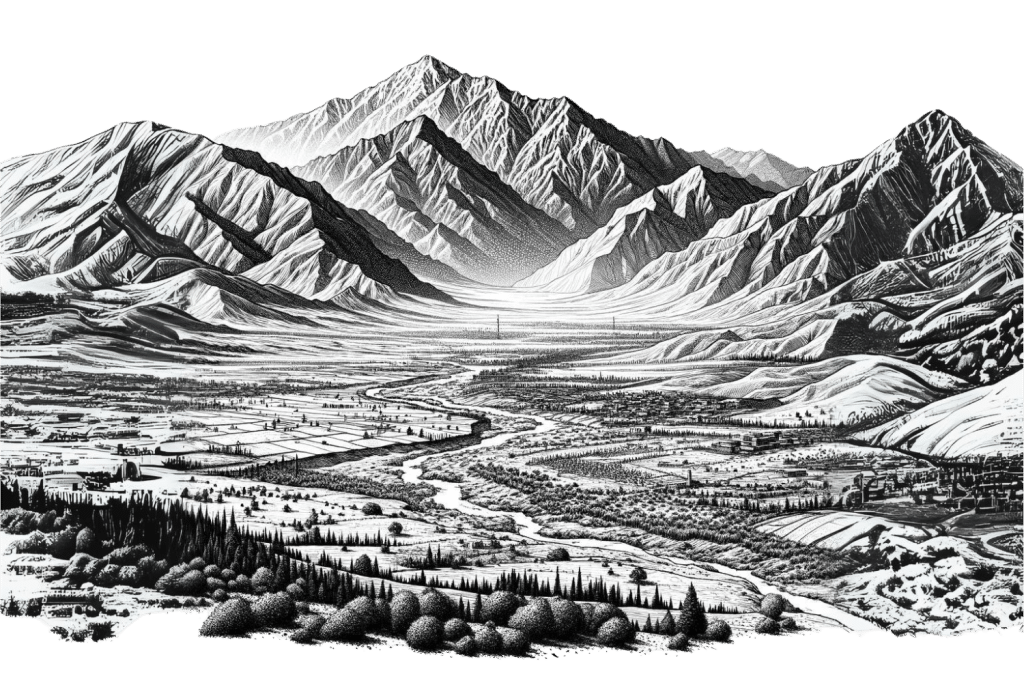
Another thing to consider is humidity. The optimal conditions for cannabis growth occur in drier, CO2-rich environments [4]. When humidity levels are too high, some strains will remain vegetative and never start flowering, and a damp environment might attract parasitic fungi.
In general, cannabis plants will need more humidity during their seed and growing stages and less humidity in their flowering stages. This means wild weed tends to flower in early autumn when the air is warm but not too hot or damp.
Is Weed an Invasive Species?
Technically, yes, but it’s more complicated than that.
An invasive species is an organism not native to a particular area and can cause damage to the local environment.
Cannabis can fit this description, as it grows quickly, and its seeds can be dormant for up to 10 years before sprouting. They often invade agricultural fields, harm crops, and damage farming equipment [5].
All weed growing wild in Africa, the Americas, and Australia can be considered invasive.
Because of all this, investigations have been carried out both in the United States and Australia to classify just how invasive cannabis can be. Researchers are also trying to find ways to mitigate feral weed invasions of farmland [6, 7].
Food for Nature
As with anything in nature, weed is part of the food web.
Many critters will flock to wild cannabis plants to devour them. The leaves, seeds, and roots of the plant are all highly nutritious and loved by herbivores around the world.
Some of the more common predators of cannabis include:
- Deer
- Moles and gophers
- Ants
- Grasshoppers
- Snails
- Caterpillars
- Aphids
- Leaf miners
- Spider mites
- Whiteflies
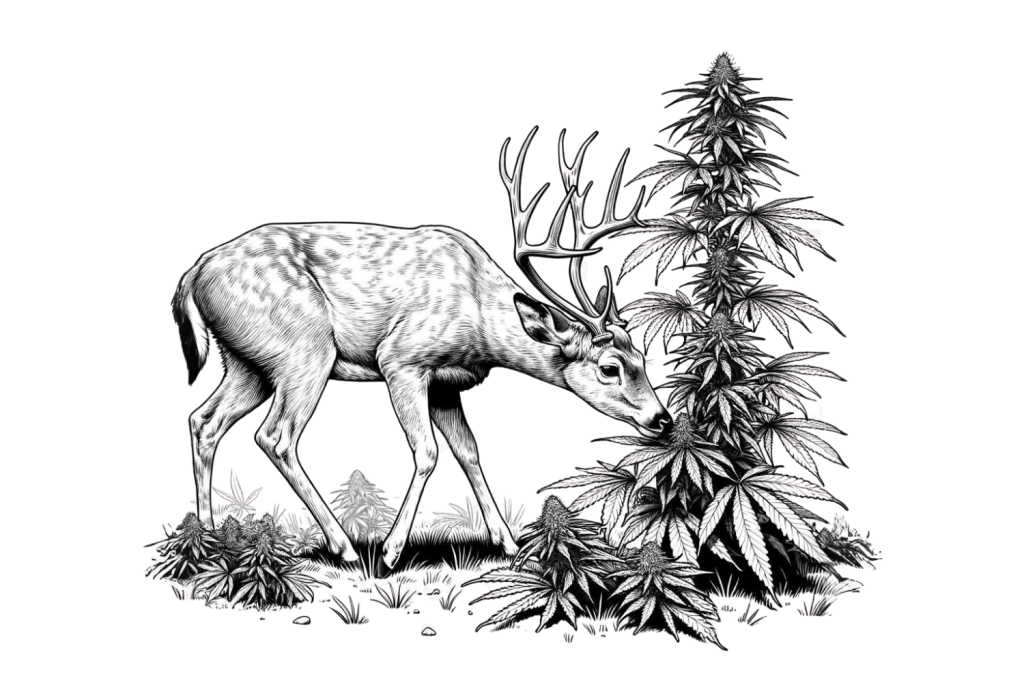
Weed is not without allies in its fight for survival, and although it has many predators, it also forms beneficial relationships with animals and insects [8], including:
- Birds, by eating bugs and spreading seeds
- Ladybugs, whose larvae eat aphids
- Wasps, by eating caterpillars
- Flower flies, whose larvae eat aphids and whiteflies
- Beetles, which eat ants and worms
- Spiders, which eat anything they come across
What’s the Difference Between Wild Weed & Cultivated Weed?
Most of the weed we use comes from unfertilized female plants. Growers discard the male plants as soon as possible, as they don’t produce flowers, and fertilized females make fewer cannabinoids.
Wild weed is not subject to those controls — males and females grow freely, and humans do not curate fertilization. At the same time, wild weed is not protected from the many dangers of the environment.
Wild weed will look different from its domestic counterparts since it needs to adapt on its own.
Wild weed is shorter and bushier than cultivated cannabis plants. The plants also show smaller buds and flowers full of seeds, as male plants are very effective in fertilizing the females.
Another important difference is that these wild strains will (usually) be 100% Cannabis indica, Cannabis sativa, or Cannabis ruderalis — a level of purity that’s rare in cultivated weed.
What’s the Difference Between Wild Weed & Ditch Weed?
You might have heard people referring to wild strains of weed as “ditch weed” and assumed it’s a synonym for all kinds of wild marijuana. But these terms don’t refer to the same thing.
Ditch weed, also known as feral weed, is a strain of cannabis found all across North America but primarily in the Midwest.
Feral weed, as its name implies, is not a wild strain of cannabis but a feral strain. Ditch weed descends from domesticated plants that turned wild, while wild strains have always been wild.
The majority of feral weed in North America, particularly in the Midwest, can trace its roots back to industrial hemp. Hemp and marijuana differ in their chemical structures, as hemp has a much lower THC level [1].
Rather than smoking, hemp was mostly used for making things such as paper, rope, clothing, animal feed, and even biofuel [2] — until the 2018 Farm Act opened the door for other uses, such as CBD, delta 8, and other cannabinoids.
Due to the low THC, ditch weed is even less likely to get you high at all. So, unless you want to open a textile business, you probably won’t find much use for this plant.
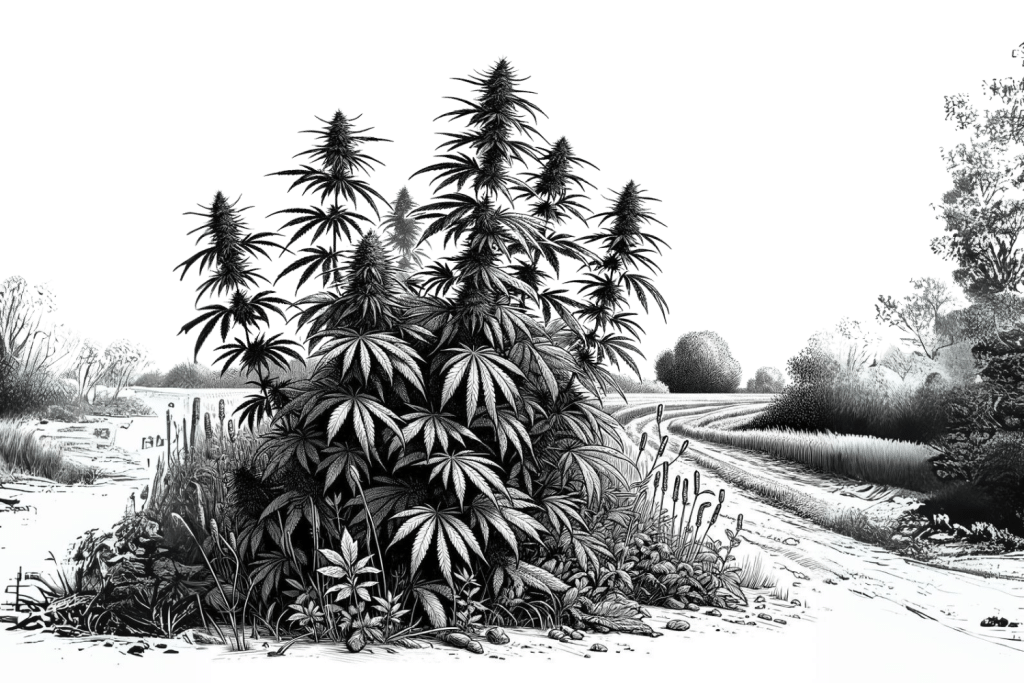
Is Wild Weed Legal?
As most weed lovers already know, marijuana laws are changing — and they’re changing fast.
In the United States, the fact that weed is illegal is what led to the existence of feral ditch weed. With the Marijuana Tax Act of 1937, the use of industrial hemp in the Midwest for things such as rope and textiles began to decline. But that didn’t mean the plants went away with the businesses.
When the industries disappeared, the hemp remained and soon began to naturally reseed and multiply, becoming the ditch weed that now spans miles and miles of the Midwest.
The DEA’s Domestic Cannabis Eradication branch tried to wipe out ditch weed, claiming to have eliminated 118 million feral cannabis plants by 1991 [9]. This didn’t do much to lower ditch weed populations, as they grow too quickly to control.
Due to feral weed’s low levels of THC, their eradication is now considered a very low priority, even in states where weed remains illegal.
As of 2018, weed plants with less than 0.3% THC became legal in many American states, including Iowa, Kansas, and Nebraska, where large amounts of ditch weed grow freely.
Frequently Asked Questions About Cannabis
Here are some common questions we hear about cannabis, so we’ll answer them next.
1. Where does cannabis come from?
Cannabis originated in Central Asia, possibly around the Himalayas or the Hindu Kush mountains. It then expanded all across Eurasia, from China and India to the Middle East, Europe, and Siberia.
2. Can you smoke wild weed?
The short answer? Yes.
But wild cannabis has less THC and CBD than what you may be used to, as wild female plants get fertilized by males frequently, causing them to spend part of their energy on seed production.
Despite its often weaker effects, people have found ways to enjoy it. In India, for example, the resin from wild cannabis plants is used to make charas, a local kind of hashish that can be smoked or ingested orally [10].
3. What’s the difference between wild weed and regular weed?
Wild weed is not curated by human growers who cull male plants and often hybridize different strains. Most of the time, wild cannabis flower is much less potent and tends to have lots of seeds due to fertilization.
References
- Congressional Research Service (2019) Defining Hemp: A Fact Sheet [Fact sheet]
- Keller, N. M.(2013) The Legalization of Industrial Hemp and What It Could Mean for Indiana’s Biofuel Industry. Indiana International and Comparative Law Review.
- Coleman, A. (March 6, 2018) Estonian district votes to get cannabis leaf flag
- Chandra, S., Lata, H., Khan, I. A., & Elsohly, M. A. (2008). Photosynthetic response of Cannabis sativa L. to variations in photosynthetic photon flux densities, temperature and CO 2 conditions. Physiology and Molecular Biology of Plants, 14, 299-306.
- Chandra, S., Lata, H., Khan, I. & Elsohly, M. A. (2008) Photosynthetic response of Cannabis sativa L. to variations in photosynthetic photon flux densities, temperature and CO2 conditions. Physiology and Molecular Biology of Plants.
- Canavan, S., Brym, Z. T., Brundu, G., Dehnen-Schmutz, K., Lieurance, D., Petri, T., … & Flory, S. L. (2022). Cannabis de-domestication and invasion risk. Biological Conservation, 274, 109709.
- Jehangir, S., Khan, S. M., Ahmad, Z., Ejaz, U., ul Ain, Q., Lho, L. H., … & Raposo, A. (2023). The Cannabis sativa L. in the Western Himalayas: a tale of the ecological factors behind its continuous invasiveness. Global Ecology and Conservation, e02779.
- Canavan, S., Brym, Z. T., Brundu, G., Dehnen-Schmutz, K., Lieurance, D., Petri, T., … & Flory, S. L. (2022). Cannabis de-domestication and invasion risk. Biological Conservation, 274, 109709.
- Victorian Resources Online (2001) Invasiveness Assessment – Marijuana (Cannabis sativa) in Victoria.
- University of California Agriculture & Natural Resources (2018) Pests in Gardens and Landscapes: Quick Tips – Beneficial Predators.
- Bureau of Justice Statistics (1992) Drugs, Crime and the Justice System. US Department of Justice, Office of Justice Programs.
- Mikuriya, T. H., Grierson G. A., & Campbell J. M. (1894) Physical, Mental, and Moral Effects of Marijuana: The Indian Hemp Drugs Commission Report. Schaffer Library of Drug Policy.

